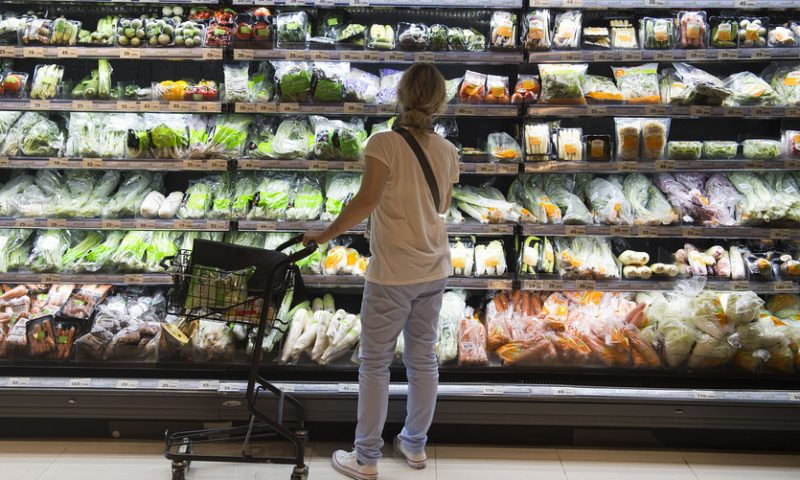One executive forecasts that more than 60% of groceries will be bought online by 2025
The growing use of ride-sharing apps is pushing the online grocery business underground, according to CommonSense Robotics, a company that is using propriety technology, including artificial intelligence, to fulfill its mission of delivering online grocery orders within one hour.
CommonSense said construction on its second “micro-fulfillment” center is underway. The facility will be located on the -1 level of a parking lot of Tel Aviv’s Shalom Meir Tower, below ground level. The fulfillment center will be 18,000-square-feet with an average height clearance of just 11 feet and three temperature zones to accommodate fresh, chilled and frozen items.
CommonSense said with more people using apps like Uber Technologies Inc.UBER, +0.00% and Lyft Inc. LYFT, +3.88% these tight, and unused, urban spaces are prime real estate for the grocery delivery business.
“With the rise of ride-sharing apps and micro-mobility in cities, car ownership is on the decline and parking lots are increasingly sitting vacant,” the CommonSense announcement said.
CommonSense’s says its first facility is the “world’s smallest automated fulfillment center” at just 6,000 square feet. It has been working with its Super-Pharm retail partner since October 2018.
“Taking e-commerce fulfillment underground inside cities is one way we can enable retailers to fulfill online orders in close proximity to their customers — while doing so profitably,” said Elram Goren, chief executive of CommonSense in a statement.
These facilities operate using few human workers, a touchy subject for many who fear seeing robots replace humans in the labor market.
“Some jobs are going to move. It’s not a very romantic way of thinking, but it’s the reality,” Goren told MarketWatch at the Shoptalk conference in March.
Andy Puzder, the former chief executive of Carl’s Jr. parent CKE Restaurants Inc., raised eyebrows with statements about job automation, the rising cost of labor and keeping wages low. He was a potential pick for labor secretary for then-President-elect Trump in 2016.
“The question is not what robots will do but what people will do,” Goren said.
Increasingly, people are going to order their groceries online, according to industry executives and Moody’s analysts.
An October 2018 Moody’s report said the U.S. online food retail business was 2% of the roughly $1 trillion in sales.
“The logistical challenge associated with delivering perishable and fresh food items on a large scale is a major constraint,” the report said. “Despite the many compelling reasons for online sales to grow, we think most of the growth in online grocery sales will be limited to certain densely populated metropolitan areas, where income levels and density of delivery routes are more conducive to online grocer purchases.”
Of course, this hasn’t stopped major grocery companies from trying to figure out how to advance this business. Kroger Co. KR, +0.60% announced on Thursday that it and Ocado Group Plc are going to invest $55 million on an automated warehouse facility in Georgia. The fulfillment center will create 400 jobs.
And Walmart Inc. WMT, +0.60% has tested all sorts of delivery services, including in-home delivery, which is launching in the fall in three markets: Kansas City, Mo., Pittsburgh and Vero Beach, Fla., according to a June announcement.
“What remains unclear for us is: 1) how much could this cost to roll-out at scale, 2) how much demand will there ultimately be, and 3) how much are consumers willing to pay for the service,” said Charlie O’Shea, Moody’s vice president, in a statement last month about this Walmart service. “We remain concerned that companies may end up overspending in their development of various delivery options by overestimating the potential demand, though that is a ‘down-the-road’ issue.”
Pradeep Elankumaran, chief executive of Farmstead, an online grocer that also uses AI technology and operates in the San Francisco Bay area, thinks online grocery sales are about to soar, including fresh food. One of the sources of consumer reluctance about online grocery is the inability to personally choose produce like bananas and tomatoes.
“By 2025, well over 60% of U.S. will be buying online, including fresh,” said Elankumaran. “At Farmstead, 70% of the basket is fresh.”
For the mid-market customer that makes up much of the U.S. grocery-buying population, online grocery is too expensive, Elankumaran said. That’s where technology comes in. Automating some functions reduce costs.
Elankumaran says big warehouses that are far away from customers are also a hurdle for the online grocery category.
“The small-format warehouse is best,” he said.

